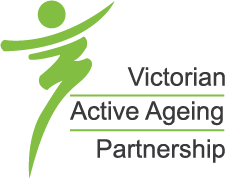VAAP - Self Assessment Tool and Resources
Leaders - Sport
Trained
Helpful tips:
-
Employing/engaging the ‘right person in the first place’ (i.e. a person with the appropriate qualifications and/or training, and good interpersonal skills) is a critical step in ensuring good quality leaders/tutors/coaches/instructors.
-
It is beneficial for a senior staff member or volunteer coordinator to have the designated responsibility of supervising, assisting and mentoring less experienced staff/volunteers.
-
It is important that staff/volunteers have a good level of knowledge regarding organisational policies relating to participant privacy, confidentiality, disclosure, emergency procedures, etc.
-
Having trained and knowledgeable staff/volunteers is also part of an organisation/service/club’s risk management.
Resources:
Broad exercise knowledge
Helpful tips:
-
If a leader is unsure of the appropriate advice to give, they should seek advice from another relevant staff member or refer the older people to another relevant health/fitness professional.
Resources:
Monitoring and assessment
Helpful tips:
-
Any documentation relating to participant assessments should be maintained accurately and securely
First aid
Helpful tips:
-
Leaders should update their first aid qualification every three years and their CPR certificate every 12 months
Resources:
Enthusiastic
Helpful Tips:
-
Having a basic understanding of the factors that act as barriers and positive influences on older people’s participation in physical activity will assist a leader to work better with the participants.
-
Gaining feedback from participants regarding what might help to motivate them would be a useful conversation to have.
-
Seeking a few tips about general motivational techniques would be worthwhile.
Resources:
Personalised attention
Helpful tips:
-
If the program leader/tutor/coach doesn’t have time to have individual discussions with each older person when they commence, if possible, have another appropriate staff member/volunteer/coach undertake this task and provide feedback to the leader/tutor/coach. The discussion with the older person should be two-way – providing and gaining information.
-
Encouraging first-time attendees to introduce themselves to the program leader/tutor/coach at the start of the class and allowing some time before and after class for participants to ask questions or speak to the leader.
-
Any documentation relating to participant assessments should be maintained accurately and securely
Regular communication
Helpful tips:
-
In a setting such as a community health service, the follow-up of non-attenders might be able to be undertaken by a staff member with the appropriate skills and experience to respond to an older person who is experiencing personal issues (rather than simply a reluctance to be physically active). This should only be done by someone who is sufficiently skilled to deal with broader issues that may be identified by an older person.
-
Making follow-up calls and/or sending messages to those who miss classes is a practical way of showing that they are valued, which is particularly important for socially isolated and disadvantaged participants.
Group building
Helpful tips:
-
If a class, program, activity or sport runs for 45 minutes, allow 30 minutes before and after (e.g. the room/venue booking is extended before and after) to provide an opportunity for socialising.
-
Following some programs, participants gather for coffee which provides them with the opportunity to socialise with each other.
-
As an alternative, organise a social gathering for the participants (e.g. a morning tea) at least once every six months. Such a gathering suggested by the leader/tutor/coach might better include older people who lack confidence in socialising before or after the physical activity.
Inclusive decision making
Helpful tips:
• If changes are made based on the input of participants, continue to check in with them as to whether the changes are in line with what they anticipated.
Receives practice updates
Resources:
Knowledge of services
Helpful tips:
-
As a starting point, your local council will most likely have a list of local organisations that work with older people.
-
Visit local organisations that work with older people and inform them about what your organisation/ service/club offers.
-
Invite staff and/or their older clients from local organisations to your organisation/service/club so they have an understanding of what’s involved.
-
Other local organisations might have successful arrangements in place to facilitate the engagement of older into their programs.
-
Current older participants might be aware of other local organisations that may wish to assist their clients into physical activity opportunities.





